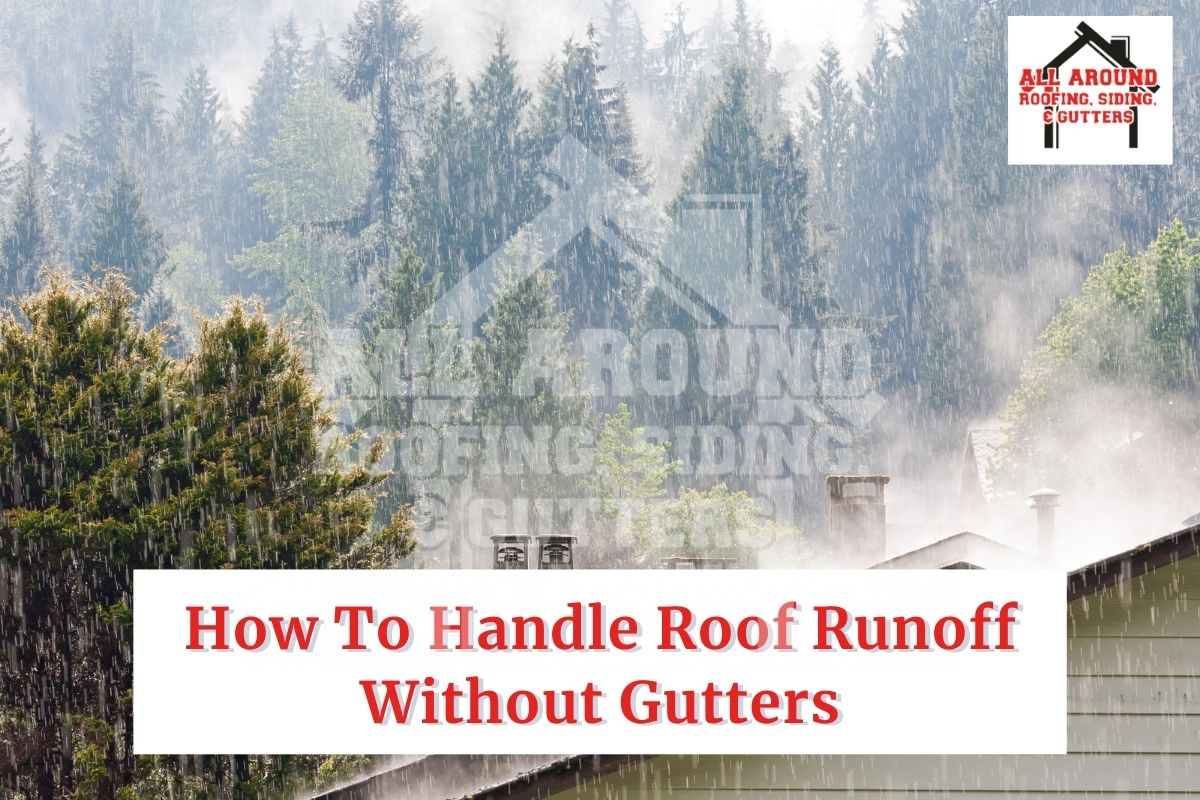Managing rainwater runoff on a roof is crucial to the safety and protection of your property. Without adequate control, water can cause significant interior damage, basement flooding, and soil erosion.
While gutters are usually a common solution, they aren’t always practical for every home. To help you make the best decision for your home, let’s learn how to handle roof runoff without gutters.
What Is Roof Runoff?
Roof runoff refers to the water that drains off your roof after it rains or when snow melts. As rainwater hits your roof, it collects and flows down the slope. Usually, this water is channeled into gutters installed along the roof’s edges. The gutters then direct the water away from the house, helping to prevent potential damage.
Potential Issues
- Erosion: Water can wash away topsoil and create gullies.
- Foundation Damage: Pooling water can cause cracks in the foundation.
- Basement Flooding: Excessive runoff can flood basements.
- Breeding Ground For Mosquitoes: Stagnant water attracts mosquitoes.
- Landscape Damage: Runoff can wash away plants and soil.
Why Consider Gutter Alternatives?
1. Cost
Gutters can be expensive to buy, install, and maintain. Exploring alternatives might offer a cheaper solution that still works effectively.
2. Aesthetics
Some property owners prefer the look of a gutter-free building because they feel traditional gutters are too bulky or affect the appearance of the building. Alternative options can provide a cleaner look while still effectively managing water.
3. Maintenance
Gutters need regular cleaning to avoid clogs and other issues like rust or leaks. Choosing other drainage methods can reduce or eliminate the need for this type of maintenance.
Also Read: 5 Gutter Accessories For a Leak-Free Home In 2024
Top 10 Gutter Alternatives To Protect Your Home From Water Damage
Let’s take a look at the best ways to drain water away from your property without the use of gutters:
#1. Rain Chain
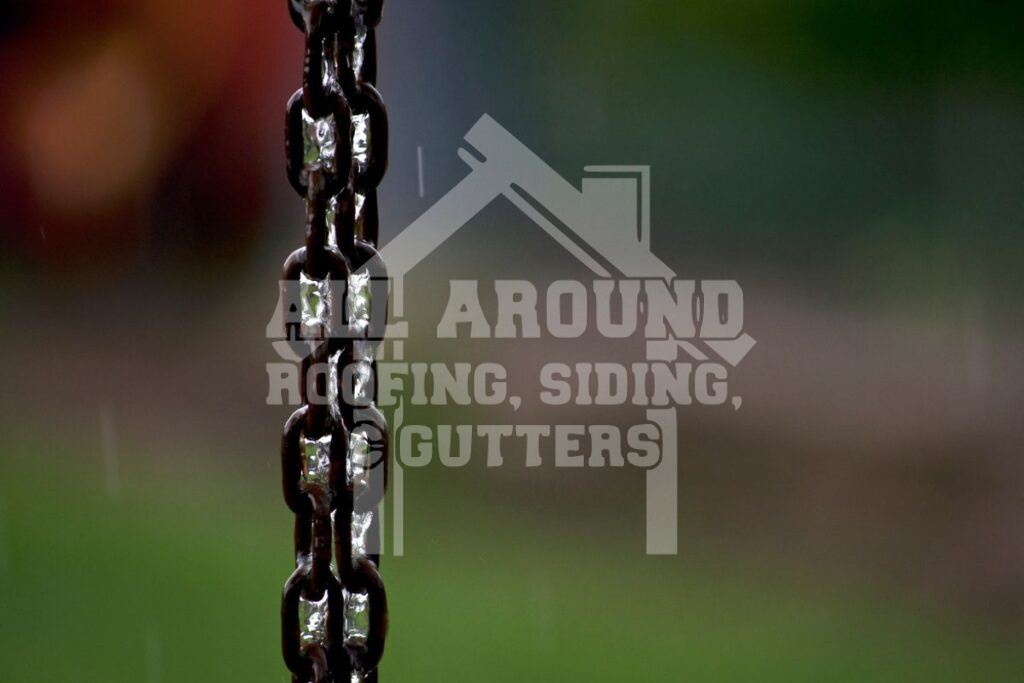
A stylish alternative to traditional downspouts, rain chains use a series of cups or links to guide rainwater down in a decorative way, creating a waterfall effect. They’re easy to install and help prevent water from splashing around the base of your foundation and causing erosion. However, they hold less water than downspouts and can be less effective in strong winds or freezing temperatures. Many use them along with regular gutters or rain barrels for style and function.
- Visual Appeal: Stylish designs enhance exteriors
- Eco-Friendly: Helps collect rainwater for reuse
- Soothing Sounds: Provides a calming water trickle
#2. Drip Edges
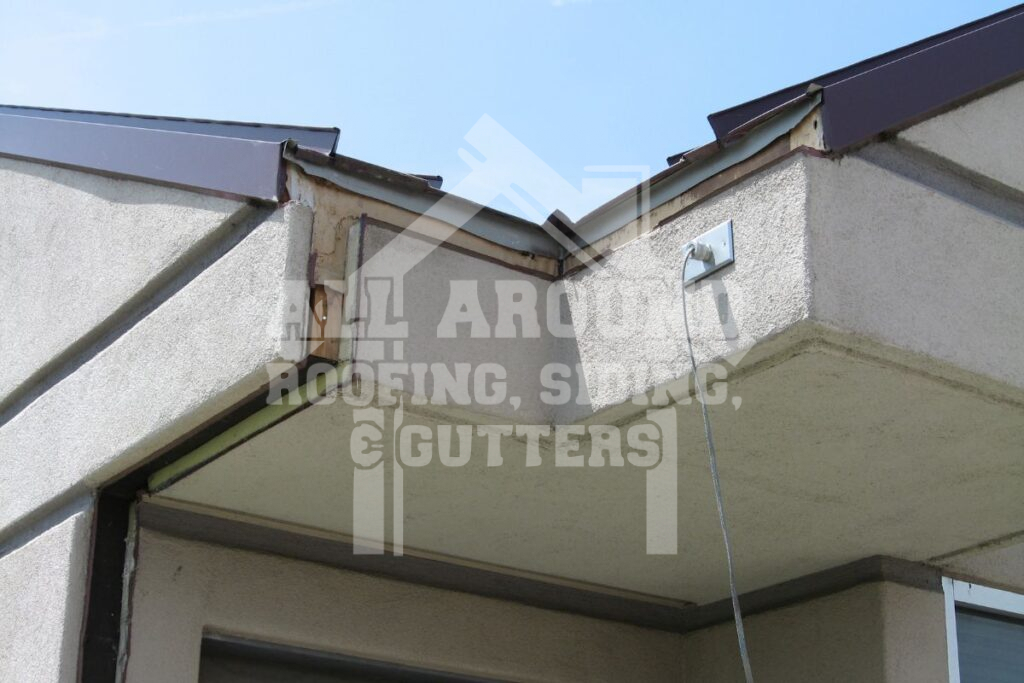
A drip edge isn’t a full gutter replacement but is important for water management. It’s installed under the roof shingles and helps direct water away from the roof edge and the fascia boards. This prevents damage and extends the life of the roof while also creating a neat finish. Drip edges work best when paired with traditional gutters or other drainage systems and can be tricky to install and clean on their own.
- Protects Foundation: Directs water away from the fascia board and foundation
- Prevents Ice Dams: Helps reduce ice buildup on roofs
- Aesthetic Finish: Completes the look of the roofline and forms a neat appearance
#3. Hidden Gutters/ Box Gutters
A creative substitute for conventional gutter systems is hidden gutters, sometimes referred to as box gutters. They are almost invisible since they’re incorporated into the roof’s structure, and their sleek appearance goes well with current architectural styles. While avoiding the frequent problems with visible gutters, like clogs and maintenance difficulties, hidden gutters efficiently manage rainfall.
- Efficient Water Management: They handle more water due to their larger size
- Long-lasting Durability: Made from sturdy materials like galvanized steel or PVC
- Improved Functionality: Often includes drainage pipes integrated within walls
#4. A Swale
Another great alternative is a swale, which are shallow, sloped ditches that direct water away from your home’s foundation. They’re lined with grass or plants to slow the flow of water and let it soak into the ground. This way, a swale prevents erosion and flooding and adds to the landscape surrounding your building. However, they need more space and may require regrading as the soil settles.
- Water Management: Redirects runoff and reduces erosion
- Natural Look: Enhances landscape with native plants
- Groundwater Recharge: Helps replenish groundwater
#5. Dry Wells/Rain Gardens
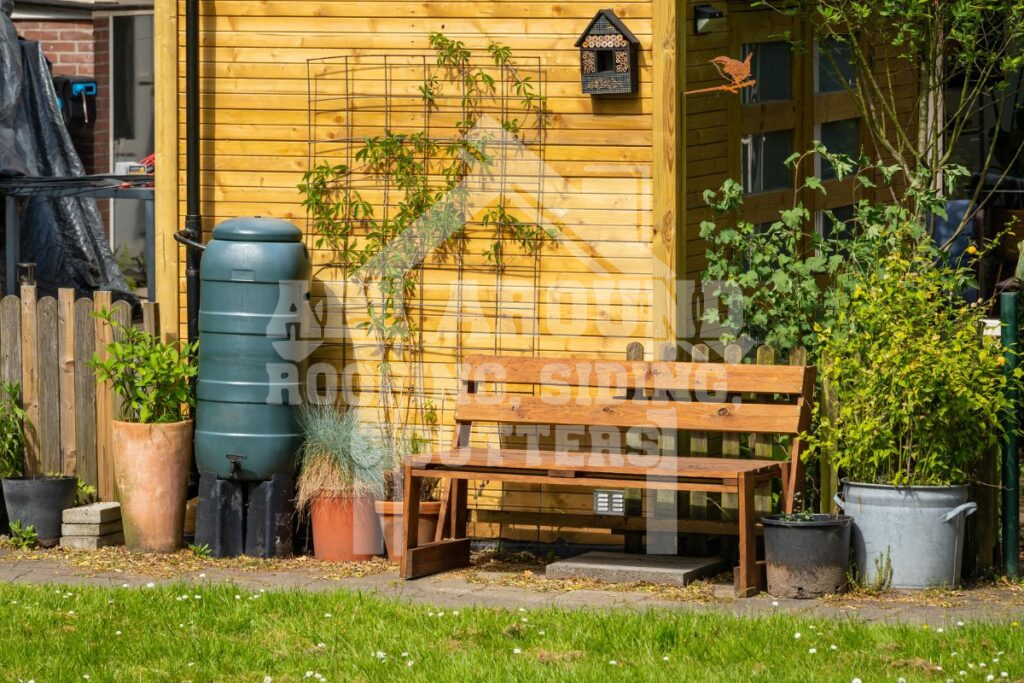
The next alternative is dry wells and rain gardens, which collect and store rainwater, letting it slowly soak into the ground. A dry well is a pit filled with gravel or stones, while a rain garden is a shallow, planted area, and both typically have a swale leading to them. Both help reduce flooding, recharge groundwater, and filter pollutants. However, they need more space and upkeep and may not work well in areas with poor drainage or high water tables.
- Stormwater Management: Captures and filters excess rainwater
- Environmental Benefits: Supports local biodiversity
- Visual Appeal: Adds beauty with native plants
#6. French Drains
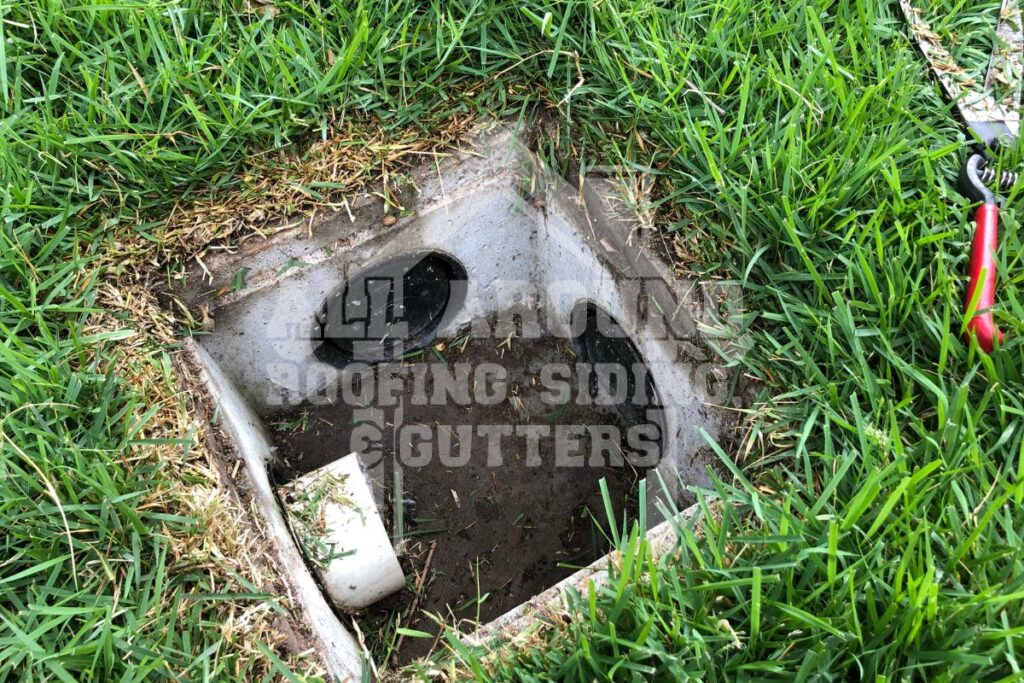
French drains are gravel-filled trenches with a perforated pipe that collects and moves water away from a specific area. They help prevent basement flooding, foundation damage, and erosion. They require more digging and installation than other options but are effective for properties with serious drainage problems or steep slopes. They also need periodic cleaning to remove debris.
- Effective Diversion: Redirects water from problem areas
- Versatile Use: Suitable for various settings
- Long-Term Solution: Minimal maintenance required
#7. Drip Paths
These narrow strips of gravel or rock along your foundation to direct water away from the house are called drip paths. They use gravity to keep water from pooling and prevent soil erosion. They’re attractive and low-maintenance but can be expensive to install, especially for larger homes. They’re a good option for a simple, effective water management solution.
- Protects Foundation: Directs water away from the home
- Aesthetic: Decorative options enhance landscaping
- Low Maintenance: Minimal upkeep is needed
#8. Grading/Sloping
This involves shaping the ground around your property to slope away from the foundation. This prevents water from pooling around your house and directs it to a drainage system such as a rain garden. It’s a cost-effective solution, but may need heavy equipment and significant labor in order to be established. It’s best done during construction or major landscaping projects.
- Foundation Protection: Ensures water flows away from the home
- Cost-Effective: Affordable compared to complex systems
- Improves Drainage: Enhances natural water flow
#9. Siphonic Drainage Systems
This uses a vacuum effect to remove water from large roofs quickly. They are very efficient for heavy rain and suitable for large commercial roofs. These systems create a vacuum that pulls water through smaller pipes, removing water faster and reducing pooling.
- High Efficiency: Fast water removal for heavy rain
- Space-Saving: Smaller pipes, flexible design
- Reduces Pooling: Vacuum effect prevents pooling water
#10. Rain Diverters
The last option is rain diverters, which are small devices that divert water away from specific areas of your roof, such as flower beds or rain barrels. They’re easy to install and inexpensive, helping to reduce flooding and standing water. However, they may not handle heavy rain or steep roofs as well because they’re traditionally paired with gutter channels. They’re useful as a temporary or additional solution until a more complete drainage system is in place.
- Simple Installation: Easy to set up and use
- Cost-Effective: Less expensive than full systems
- Targeted Management: Directs water to specific areas
Want To Protect Your Roof From Water Run Off?
Handling roof runoff without traditional gutters is possible by using the alternatives we have mentioned above. These methods not only manage runoff effectively but also improve your home’s appearance. Each option has its benefits so choose the one that best fits your needs.
Still feel like traditional gutters are your best option? Trust All Around Roofing, Siding & Gutters for expert gutter installation, repair, and maintenance. With years of experience, we ensure your gutters function flawlessly and keep your home protected. Contact us at (937) 902-2839 for a free estimate!

